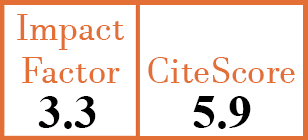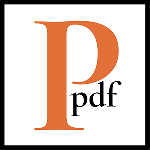Full Papers
Effectiveness and safety of filgotinib in rheumatoid arthritis patients: data from the GISEA registry
M. Fornaro1, R. Caporali2, M. Biggioggero3, S. Bugatti4, L. De Stefano5, A. Cauli6, M. Congia7, F. Conti8, M.S. Chimenti9, C. Bazzani10, S. Perniola11, F. Atzeni12, G. Lapadula13, G. Ferraccioli14, F. Iannone15
Collaborator/s: A. Semeraro1, M. Sebastiani2, G. Cassone3, M. Govoni4, F.P. Cantatore5, L. Santo6, B. Frediani7
- Department of Precision and Regenerative Medicine and Ionian Area, University of Bari, Italy.
- Department of Rheumatology and Medical Sciences, ASST G. Pini-CTO Milan, and Departmnent of Clinical Sciences and Community Health, University of Milan, Italy.
- Department of Rheumatology and Medical Sciences, ASST G. Pini-CTO Milan, Italy.
- Dipartimento di Medicina Interna, IRCCS Policlinico S. Matteo, and Terapia Medica, Università di Pavia, Italy.
- Dipartimento di Medicina Interna, IRCCS Policlinico S. Matteo, and Terapia Medica, Università di Pavia, Italy.
- Unità Operativa Complessa di Reumatologia, Dipartimento di Scienze Mediche e Sanità Pubblica, Azienda Ospedaliero-Universitaria e Università di Cagliari, Italy.
- Unità Operativa Complessa di Reumatologia, Dipartimento di Scienze Mediche e Sanità Pubblica, Azienda Ospedaliero-Universitaria e Università di Cagliari, Italy.
- Rheumatology Unit, Dipartimento di Scienze Cliniche Internistiche, Anestesiologiche e Cardiovascolari, Sapienza Università di Roma, Italy.
- Rheumatology, Allergology and Clinical Immunology, Department of Medicina Dei Sistemi, University of Rome Tor Vergata, Rome, Italy.
- Unit of Rheumatology and Clinical Immunology, ASST Spedali Civili, Brescia, Italy.
- Clinical Immunology Division, Fondazione Policlinico Universitario A. Gemelli IRCCS, Rome, Italy.
- Rheumatology Unit, Department of Experimental and Internal Medicine, University of Messina, Italy.
- Gruppo Italiano di Studio sulla early Arthritis, GISEA, Bari, Italy.
- Gruppo Italiano di Studio sulla early Arthritis, GISEA, Roma, Italy.
- Department of Precision and Regenerative Medicine and Ionian Area, University of Bari, Italy. florenzo.iannone@uniba.it
- ASL Taranto; P.O. "Valle d'Itria" Martina Franca, Rheumatology, Martina, Italy,
- Azienda Policlinico of Modena, Rheumatology Unit, University of Modena and Reggio Emilia, Modena, Italy
- Azienda Policlinico of Modena, Rheumatology Unit, University of Modena and Reggio Emilia, Modena, Italy
- University of Ferrara, Rheumatology Unit, S. Anna Hospital - Ferrara and Department of Medical Sciences - , Ferrara, Italy
- University of Foggia, Rheumatology Clinic, Department of Medical and Surgical Sciences, Foggia, Italy
- ASL BT Andria, UOS Reumatologia DSS 4 Barletta, Barletta, Italy
- University of Siena, Rheumatology Unit, Dipartimento di Scienze Mediche, Chirurgiche e Neuroscienze, Siena, Italy
from the GISEA registry
CER17112
2024 Vol.42, N°5
PI 1043, PF 1050
Full Papers
PMID: 38634362 [PubMed]
Received: 05/09/2023
Accepted : 15/11/2023
In Press: 17/04/2024
Published: 14/05/2024
Abstract
OBJECTIVES:
The aim of this study was to evaluate the effectiveness and safety profile of filgotinib, a JAK1 preferential inhibitor, in rheumatoid arthritis (RA) patients included in Italian GISEA (Group for the Study of Early Arthritis) registry.
METHODS:
Data from RA patients treated with filgotinib, recorded in the GISEA registry, were analysed. Disease activity scores and patient-reported outcomes (PROs) were assessed at baseline, as well as during 12-month follow-up. A difficult-to-treat (D2T) RA patient was defined according with EULAR criteria. Retention rate of filgotinib was estimated by the Kaplan-Meier method and factors influencing drug discontinuation were estimated by Cox regression models.
RESULTS:
246 RA patients (female 89%, 57.6±12.2 years old) started filgotinib, mostly as second (22%) or further (43.9%) b/tsDMARDs line of treatment. At 3 and 12 months, 18.8% and 27.5% of patients achieved Clinical Diseases Activity Index based remission and 30.1% and 37.7% obtained a visual analogue scale of pain ≤20 (all p<0.01 vs. baseline). Filgotinib survival rate was 84.5% at the 6-month and 75.8% at 12-month follow-up, and was comparable either in monotherapy or combination therapy, and irrespective of glucocorticoid intake. b/tsDMARD naive patients had the lowest hazard ratio (HR) of filgotinib discontinuation (HR 0.29, 95%CI 0.14–0.64), while D2T-RA the highest (HR 1.82, 95%CI 1.01–3.3). Eight patients (3.3%) discontinued filgotinib due to adverse events.
CONCLUSIONS:
In an Italian real-life setting, filgotinib is confirmed to be safe and with a good effectiveness profile both in monotherapy and without glucocorticoids.



